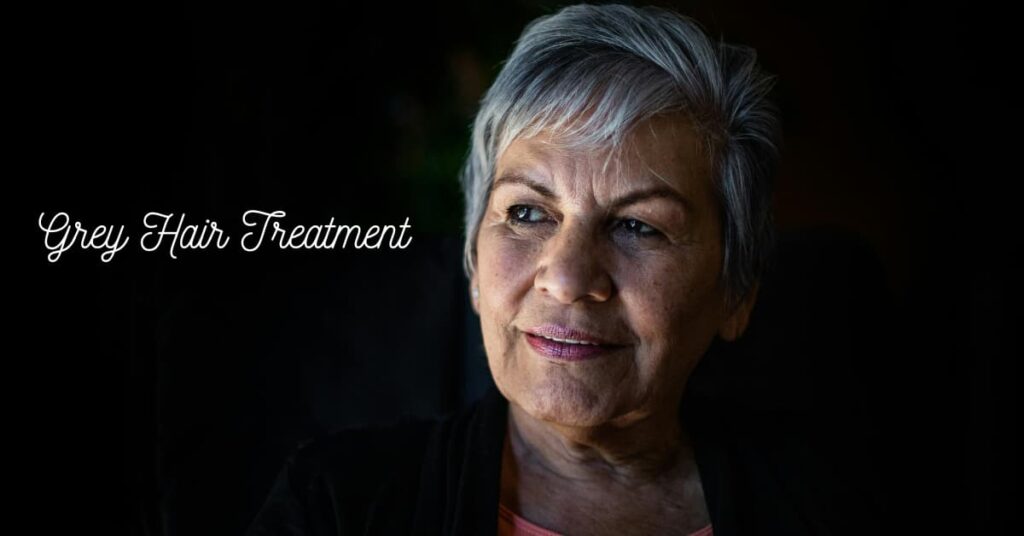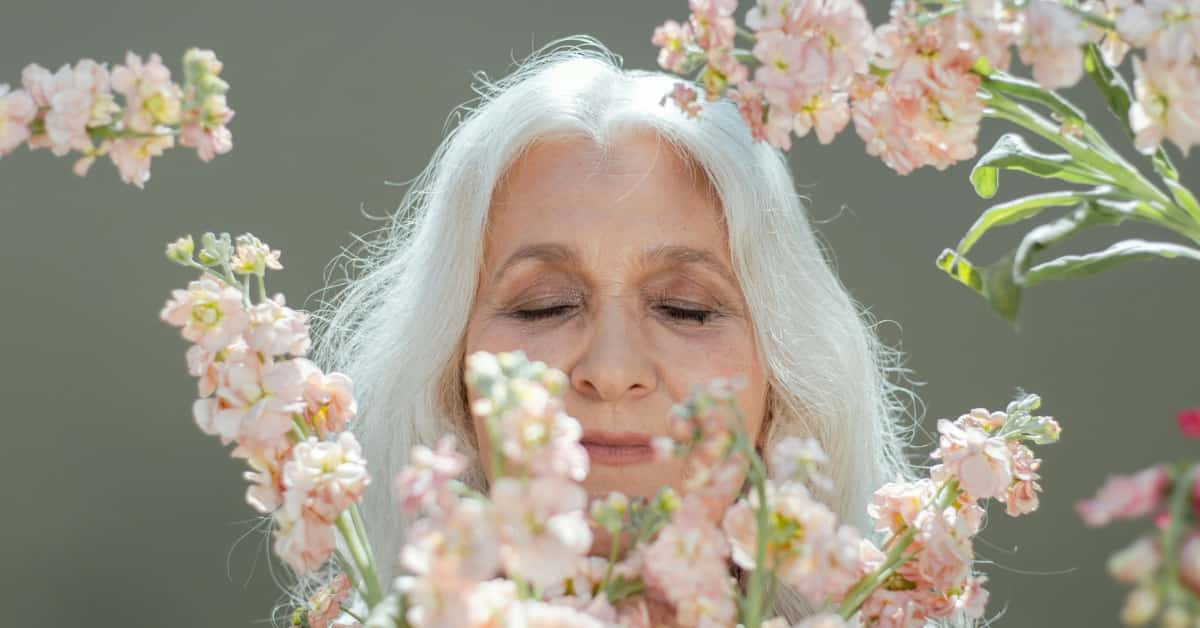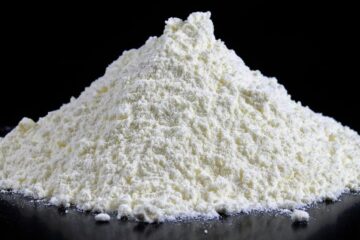Table of Contents
Introduction
The hair follicles have pigment cells that produce melanin, a chemical which gives the hair its color. As you age, these cells begin to die. Without dye, new hair strands grow in lighter shades and take on different shades of gray, silver, and finally white. Once a follicle stops producing melanin, it won’t make colored strands again. You might blame the stressful job or your wild teens for your grays. But it’s mostly the genes that dictate how early and how fast it happens. So if either of your parents had a full head of grey hair in their early 30s, there’s a good possibility you will, too.
On average, white individuals start to gray in their mid-30s. Asians begin in their late 30s. African Americans usually don’t see color changes until their mid-40s.

Grey Hair
A natural pigment named melanin dictates the color of the hair. Different combinations may tint my hair with brown, black, blonde, or red hues. The quantity and combination of melanin determine hair color.
But as you age, cells in the hair follicles named melanocytes create less melanin. It could occur because the color-producing cells wear out, get harmed, or lose support systems in the body.
Whatever the cause, the decline in melanin fades the hair to shades of gray. White hair is a symbol of very little or no melanin production.
Investigation shows that most individuals begin to see gray hair in their 30s or 40s, though timing varies from individual to individual. People who are white typically go gray earlier than people who are Hispanic, Asian, or Black.

Grey Hair Causes
Grey hair, scientifically understood as canities, is a natural and inevitable part of the aging process for most people. It results from or is caused by a complex interplay of biological, genetic & environmental characteristics that affect hair follicles.
Here’s an analysis of the primary causes:
1. Melanin Production Decline (Main Cause):
- Hair color is determined or described by melanin, a pigment produced or created by specialized cells named melanocytes found in the hair follicles.
- As we age, melanocytes become less active and ultimately die off. They deliver less melanin, or stop making it altogether.
- When new hair grows, it holds less pigment. If there’s no melanin, the hair appears white or grey. The “grey” impression is actually an optical illusion created by strands of pigmented (original color) and unpigmented (white) hair growing together.
2. Hydrogen Peroxide Buildup:
- Hair follicles naturally produce small amounts of hydrogen peroxide.
- Usually, an enzyme called catalase breaks down this hydrogen peroxide into water and oxygen.
- As we age, catalase production lessens, leading to a build-up of hydrogen peroxide on the hair follicles. This build-up may “bleach” the hair from the inside out, further reducing melanin & contributing to greying.
3. Genetics:
- Genetics plays a pivotal part in determining when & how quickly you start to go grey. If your elders, parents, or grandparents grow grey hair early, you are more likely to do so as well. It is often referred to as “premature greying” if it starts before the age of 30 for Caucasians, 30s for Asians, and 40s for Africans.
4. Oxidative Stress:
- Oxidative stress, an imbalance between free radicals & antioxidants, can damage melanocytes and impair melanin production.
- Factors that contribute to oxidative stress include pollution, UV radiation, poor diet, & lifestyle choices.
5. Medical Conditions:
- Certain medical issues may lead to premature greying or sudden greying, even though these are less common causes:
- Vitamin B12 Deficiency: Severe deficiency may impact hair pigmentation.
- Thyroid Disorders: Overactive or underactive thyroid glands (hyperthyroidism or hypothyroidism) can influence hair color.
- Vitiligo: An autoimmune condition where melanocytes are destroyed, leading to patches of skin and hair losing pigment.
- Pernicious Anemia: An autoimmune condition leading to B12 deficiency.
- Waardenburg Syndrome: A rare genetic issue that can cause premature greying, often with other symptoms.
6. Lifestyle Factors (Controversial but Contributing):
- Stress: While extreme stress is often cited anecdotally as a cause, direct scientific evidence or proof that stress directly causes grey hair is limited. However, anxiety can exacerbate existing conditions or contribute to oxidative stress, potentially accelerating the process in genetically predisposed individuals.
- Smoking: Research suggests a link between smoking and premature greying.
- Poor Nutrition: Severe deficiencies in specific vitamins (such as B12, copper, and iron) can affect hair health and pigmentation.

How to Stop Grey Hair Naturally
While genetics plays a very important role in determining when & how much hair turns grey, there’s currently no scientifically proven way to reverse genetic greying definitively. However, specific natural approaches and lifestyle changes may help slow premature greying or improve overall hair health, potentially minimizing the formation of new grey hairs.
Here’s how to approach it naturally:
I. Nutritional Support (Internal)
- Ensure Adequate Vitamin B12:
- Why: Deficiency is a known cause of premature greying.
- Sources: Animal products (meat, eggs, fish, dairy), fortified cereals, nutritional yeast. Vegetarians & vegans should consider supplements.
- Consume Iron-Rich Foods:
- Why: Iron deficiency may impact overall hair health, including pigmentation.
- Sources: Red meat, spinach, lentils, beans, pumpkin seeds, fortified cereals.
- Boost Antioxidants:
- Why: Antioxidants combat oxidative stress, which can damage melanocytes.
- Sources: Berries, dark leafy greens, colorful fruits and vegetables, green tea, dark chocolate.
- Get Enough Protein:
- Why: Hair is made of protein (keratin), so adequate intake is crucial for healthy hair growth and structure.
- Sources: Lean meats, poultry, fish, eggs, dairy, legumes, nuts, and seeds.
- Increase Copper Intake:
- Why: Copper is essential for melanin production.
- Sources: Organ meats, shellfish, nuts (cashews, almonds), seeds (sesame, sunflower), lentils, dark chocolate, mushrooms.
II. Scalp Health & Stimulation (External)
- Rosemary Oil Massage:
- Why: Improves scalp circulation, which can nourish hair follicles and support melanocyte function.
- How: Mix 2-3 drops of pure rosemary essential oil with 1 table-spoon of a carrier oil (coconut, jojoba, or almond). Massage into the scalp 2-3 times a week for 5-10 minutes before washing.
- Curry Leaves & Coconut Oil:
- Why: Curry leaves are rich in antioxidants and nutrients that can help with hair pigmentation. Coconut oil is a nourishing carrier.
- How: Boil a handful of curry leaves in 2-3 tablespoons of coconut oil until the leaves turn black. Strain the cooled oil and apply it to the scalp and hair. Leave on for an hour or overnight.
- Amla (Indian Gooseberry) Applications:
- Why: Amla is a powerhouse of Vitamin C & antioxidants, traditionally used to maintain hair color & health.
- How: Use amla powder mixed with water to form a paste, or apply amla oil to the scalp.
- Hibiscus (Jaswand) Paste:
- Why: Hibiscus flowers and leaves are traditionally used to prevent premature greying and strengthen hair.
- How: Grind hibiscus flowers & leaves into a paste, apply to scalp & hair, leave for thirty minutes, then rinse.
III. Lifestyle Modifications
- Manage Stress:
- Why: While not a direct cause, chronic stress may contribute to oxidative stress & overall poor health, potentially accelerating greying.
- How: Practice mindfulness, yoga, meditation, regular exercise, or hobbies to reduce stress.
- Avoid Smoking:
- Why: Smoking is linked to premature greying and general oxidative damage.
- How: Quitting smoking improves overall health, including hair health.
- Protect Hair from Sun and Pollution:
- Why: UV radiation and environmental pollutants can contribute to oxidative stress on hair follicles.
- How: Wear hats, use hair products with UV filters, & rinse hair after exposure to heavy pollution.
- Gentle Hair Care:
- Why: Harsh chemicals in dyes, bleaches, and aggressive styling can damage hair and follicles.
- How: Use natural or mild hair products, avoid excessive heat styling, and chemical treatments.
These natural remedies focus on supporting hair health & addressing potential nutritional deficiencies or oxidative stress. While they may help slow or reduce greying for some, especially in cases of premature greying linked to diet or stress, they generally cannot reverse genetically predetermined greying once the melanocytes have stopped producing pigment entirely. Consistency is key, and consult a doctor if you suspect an underlying medical condition or substance is contributing to your grey hair.

Grey Hair Treatment
Treating grey hair depends entirely on whether the goal is to conceal it for aesthetic reasons or to address potential underlying causes. As genetics are the primary driver, directly “curing” genetic greying isn’t currently possible, but options exist for management and potential slowing of the process.
Here’s a breakdown of grey hair treatments:
I. Concealing Grey Hair (Aesthetic Solutions)
These are the most common treatments for those who desire to maintain their natural hair color or experiment with new shades.
- Hair Dyes (Permanent):
- Description: Contains ammonia and peroxide to open the hair cuticle, remove existing pigment, and deposit new color deep within the hair shaft. They provide full grey coverage.
- Pros: Long-lasting, complete coverage, wide range of colors.
- Cons: Can be damaging to hair with frequent use, requires regular root touch-ups, and may cause allergic reactions to chemicals (like PPD).
- Demi-Permanent Hair Dyes:
- Description: Ammonia-free, low-peroxide dyes that deposit color mostly on the surface of the hair shaft. They blend greys rather than providing full coverage.
- Pros: Less damaging than permanent dyes, fades gradually (no harsh root line), adds shine.
- Cons: Less grey coverage, shorter-lasting.
- Semi-Permanent Hair Dyes:
- Description: No ammonia or peroxide; coats the outside of the hair shaft.
- Pros: Very gentle, temporary, and suitable for fun colors.
- Cons: Minimal grey coverage (tints lighter greys), washes out quickly.
- Root Touch-Up Products:
- Description: Sprays, powders, mascaras, or sticks designed to cover grey roots between salon visits temporarily.
- Pros: Quick, easy, temporary solution, non-damaging.
- Cons: Washes out with shampoo, needs daily application for some.
- Henna and Indigo (Natural Dyes):
- Description: Plant-based dyes. Henna gives red/orange tones, and indigo is used for brown/black. Often used in a two-step process for darker shades.
- Pros: Natural, can condition hair, less allergenic for many.
- Cons: Messy, time-consuming, limited color range, can be challenging to remove or change color later, may not fully cover stubborn greys.
- “Salt and Pepper” Look / Embracing Grey:
- Description: Allowing natural grey to grow out, often with stylish cuts that complement the new color, or using toners to enhance silver/white tones.
- Pros: No chemical damage, low maintenance (no dyeing), can look very sophisticated.
- Cons: The Transition period can be challenging and may not suit everyone’s preferences.
II. Addressing Underlying Causes (Slowing Down/Preventing Premature Greying)
These treatments aim to slow down the greying process, particularly if it’s premature and linked to deficiencies or stress.
- Nutritional Supplementation:
- Description: If lab tests reveal deficiencies in Vitamin B12, copper, iron, or Vitamin D, supplements may be prescribed by a doctor.
- Pros: Can reverse greying if directly caused by the deficiency; improves overall health.
- Cons: Only effective if a deficiency exists; self-supplementation can be harmful.
- Managing Medical Conditions:
- Description: Treating underlying issues like thyroid disorders or pernicious anemia can sometimes halt or reverse associated greying.
- Pros: Treats the root origin & improves overall health.
- Cons: Needs medical diagnosis & treatment.
- Stress Management:
- Description: Lowering chronic stress through lifestyle changes.
- Pros: Improves overall well-being, may indirectly slow greying by reducing oxidative stress.
- Cons: Not a direct grey hair “cure.”
- Topical Treatments (Under Research):
- Description: Some cosmetic companies are developing serums and shampoos that claim to target the cells responsible for melanin production or reduce hydrogen peroxide buildup.
- Pros: Non-invasive.
- Cons: Efficacy is largely unproven or limited in clinical trials.
- Emerging Research:
- Description: Scientists are exploring new pathways, including genetic manipulation, to reactivate dormant melanocytes or prevent their decline, but these are decades away from practical application.
Can gray hair be reversed?
If the hair turns gray, it’s unlikely to recover its color naturally.
Once cells stop producing melanin, they generally don’t resume production. That’s especially true when it comes to age-related color changes. There’s simply no turning back the watch.
Lifestyle modifications may help you slow the graying process if it’s related to controllable elements such as stress, nutritional deficiencies, or smoking. Fix those, and you may keep more of your natural color.
But even in those circumstances, don’t expect gray hair to return to its original hue.
It should be mentioned, though, that the natural look of grey hair is trending these days! But if that’s not what you want to see in the mirror, hair dye offers a rainbow of options to tint every hair on your head.
Conclusion
In conclusion, while genetics & the natural decline in melanin production are the main drivers, a combination of biological processes, environmental factors, &, at times, underlying health issues all contribute to the phenomenon of grey hair.




